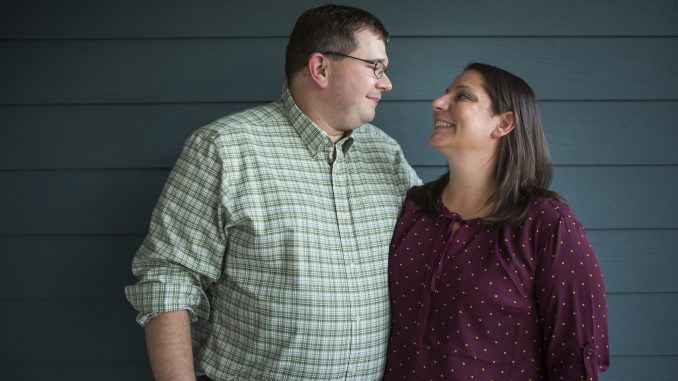
RALEIGH — In the spring of 2004, my wife, Barb, was diagnosed with IgA nephropathy, an autoimmune disease that attacks the filters (glomeruli) in the kidneys until the afflicted kidneys reach end-stage renal failure.
I was alarmed to find out how quickly Barb’s kidneys could fail. Two years removed from getting married — and with a perfect 1-year-old daughter who had reshaped my purpose in life — I thought I was facing an immediate future that might not include the person who made it all possible. We were 27 years old.
The good news is the progression of her disease was not that fast. The bad news is it didn’t erase the fact we would one day face what we’re now going through: many of my worries back in 2004 have come home to roost.
Barb has been on at-home nightly treatments, called peritoneal dialysis, which required her to get a catheter in her abdomen, since last October. We are fortunate the care available in the Triangle is phenomenal. Doing the overnight treatment (usually nine or 10 hours long) allows her to continue working — she’s a marketing writer and editor who works from home — and gives us more personal control over her care vs. going to a dialysis center several times a week. The down side to home dialysis is that our bedroom has been overrun with supplies. Each monthly delivery includes a minimum of 50 boxes.
We are also lucky that it took her more than 11 years to reach end-stage renal failure — her kidney function is currently around 5 percent — and on top of having our now 13-year-old daughter, Isabelle, Barb was healthy enough to give us a son, Brodie, in 2007. Both are extremely helpful and understand the necessary measures we must take to “keep Mom healthy.”
One tiny positive is after a months-long ordeal of struggling to strike a balance with dialysis — mostly getting Barb the sleep she was being deprived of because of dialysis “drain pain” and newly present Restless Legs Syndrome — her doctors found a medication that mostly eased her night-long pain and calmed her fidgety feet.
Unfortunately, that doesn’t change the fact that she is in bed most nights by 8:30 p.m., hooking up to her dialysis machine for the night so she can be finished and unhooked in time in the morning to make Brodie his beloved (I was told once my attempt was “maybe almost as good as Mom’s”) egg sandwich before school.
Getting ready for dialysis each night means committing to essentially living in a 10-foot radius until the next day, and that means missing out on a lot of the things she loves, whether it’s leaving early from one of Isabelle’s softball games or not seeing a band come through town because she needs to be home for dialysis hours before she’s even ready to go to sleep.
There are times I know she’s exhausted or frustrated, but she carries on with a positive attitude and continues to be an amazing wife and mother. She’s truly the strongest, most heroic person I know.
Our reality now is truly a day-to-day mentality. We’re never sure when we might get a call for a donor kidney. Our efforts to find a living donor have fallen short: many friends and family, myself included, have gone through the extensive two days of testing at Duke University Hospital, but no one has been a match for Barb.
We have received a call from Duke three times about a possible donor kidney — someone who is deceased or on life support that is a match — but have never been closer than eighth on the list when receiving that initial call.
When a kidney — well, really a pair of kidneys — is available, a number is assigned to it that essentially projects the life left in the kidney. There’s obviously no guarantee: kidneys can be rejected by the body right after transplant, and if a recipient doesn’t strictly follow the necessary lifelong aftercare, rejection is guaranteed. But because Barb is otherwise healthy, she has been earmarked, eventually, for a high-quality organ.
Barb is now a dozen years removed from her diagnosis. As our children grow — and they do, so fast — and time spins by, we find we live not in months or weeks, but days — just hoping that this one will be the day we get our call.
Cory and Barb, both 39, met at Utica College in central New York at a college newspaper meeting in 1998. They moved to North Carolina in 2000 and have lived in the Triangle since. They married in 2002 and have two children: Isabelle, 13, and Brodie, 9. Barb’s mother, Rosemary, moved in with them from Buffalo, N.Y., in March 2014. Cory is weekend editor and Carolina Hurricanes beat writer for North State Journal, and Barb is a contracted marketing editor and writer for IBM.
